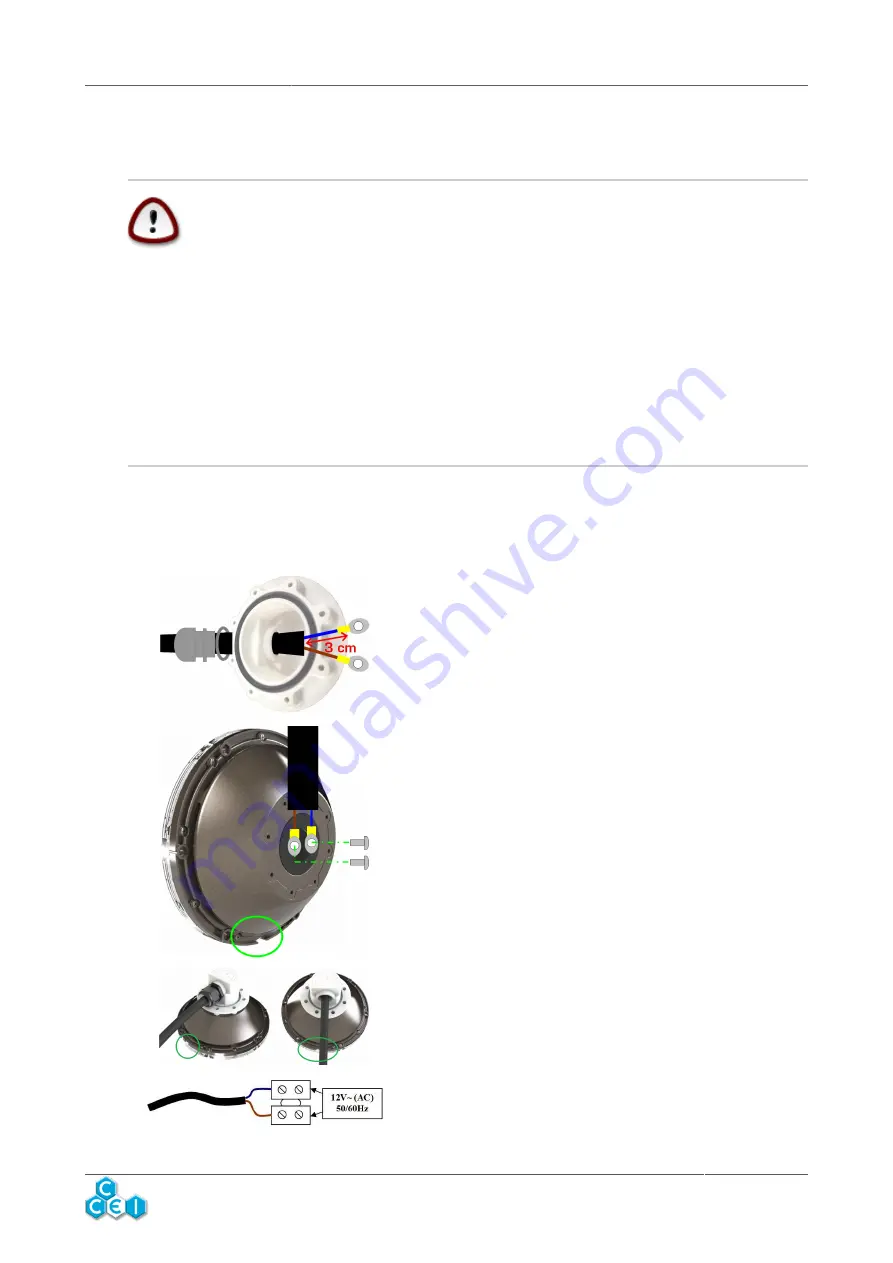
Technical instructions
ZX30
v2.0EN
www.ccei.fr
8
7. Electrical Connections
Installing this product could expose you to an electric shock. We strongly rec-
ommend that you use a qualified professional. An installation error could put
you at risk and irreversibly damage the product and the equipment connected
to it.
In compliance with the standard NF C 15-100, underwater lighting installed
in volume 0 must always be supplied with SELV (Safety Extra Low Voltage).
Turn off the power supply upstream before doing anything to the electrical
installation.
Risk of Electrical Shock. Connect only to a circuit protected by a ground-fault
circuit-interrupter (GFCI). If you cannot verify that the circuit is protected by
a GFCI, contact a qualified electrician.
On the projector side, the cable must be equipped with "eye" or "fork" terminal lugs for a proper
connection (Ø 4 mm). If the lugs have larger holes, it is possible to use the flat washers supplied. The
length of the dejacketing must be a maximum of 3cm to ensure correct installation (leak tightness).
1.
Pass the cable through the cable gland, then insert the
Ø22x1.78mm o-ring o22x1, 78 mm and pass the whole
thing through the threaded hole of the cap. Do not set
up the cable gland for the time being.
2.
Connect the terminal lugs in the spaces provided
for this purpose, using the two screws provided
(M4x8mm). Take care with the orientation of the lugs
opposite the notch is on the outside of the projector.
Tighten the connections to avoid potential overheat-
ing.
3.
Set up the cap, taking care that the o-ring remains in
place. The cable outlet should face the notch. Then,
secure the cap using the eight 3x8mm screws. Tight-
ening must be sufficient to crush the seal properly but
must not be too tight, due to the risk of damage to the
projector. The recommended torque is 1.2Nm.
4.
To finish, put the cable gland in place, taking care that
the o-ring remains in place. Tightening must be suf-
ficient to crush the seal properly but must not be too
tight, due to the risk of the seal coming out of position.
The electrical supply connection the other side of the cable
must be performed dry, in a sealed connection box whose
cable glands must be tightened in order to avoid any water
infiltration.






























